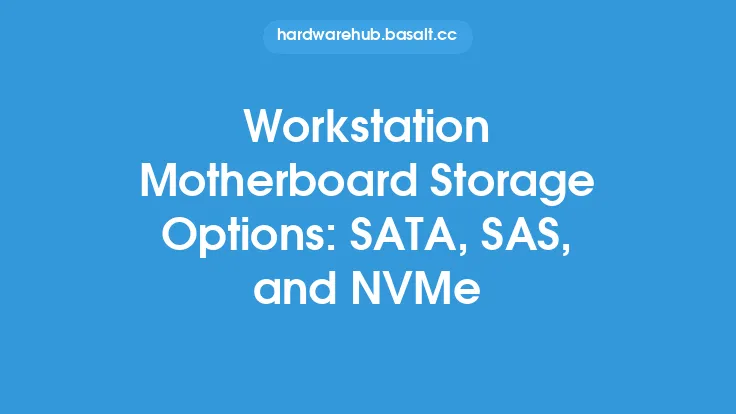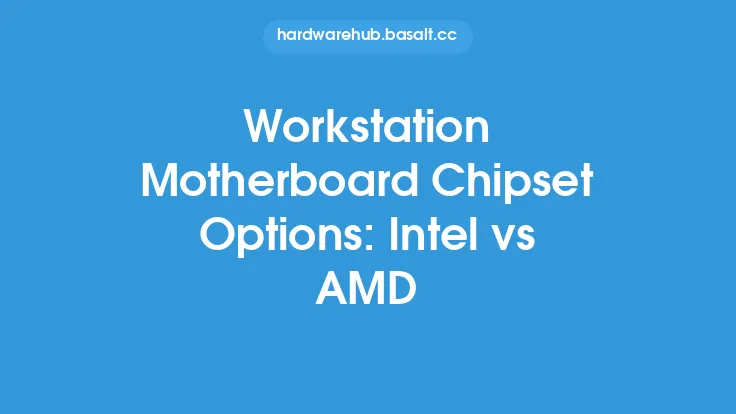When it comes to workstation motherboards, security is a top priority. These motherboards are designed to support high-performance computing, data storage, and networking, making them a prime target for cyber threats. To mitigate these risks, workstation motherboard manufacturers have implemented various security features, including Trusted Platform Module (TPM), Unified Extensible Firmware Interface (UEFI), and others. In this article, we will delve into the world of workstation motherboard security features, exploring the technologies and techniques used to protect these critical systems.
Introduction to TPM
Trusted Platform Module (TPM) is a hardware-based security feature that provides a secure environment for storing and managing sensitive data, such as encryption keys and digital certificates. TPM is a dedicated chip on the motherboard that uses advanced cryptographic algorithms to protect data from unauthorized access. The TPM chip is designed to be tamper-evident, meaning that any attempt to access or modify the data will be detected and reported. Workstation motherboards with TPM support provide an additional layer of security for sensitive data, making them ideal for applications that require high levels of security, such as financial transactions, data encryption, and secure boot processes.
UEFI and Secure Boot
Unified Extensible Firmware Interface (UEFI) is a firmware interface that replaces the traditional BIOS (Basic Input/Output System) on modern motherboards. UEFI provides a secure boot process, ensuring that only authorized operating systems and software can run on the system. Secure Boot is a UEFI feature that verifies the digital signature of the operating system and software before allowing them to execute. This prevents malware and unauthorized software from running on the system, reducing the risk of cyber attacks. Workstation motherboards with UEFI and Secure Boot support provide a secure foundation for the operating system and applications, protecting against boot-level malware and ensuring the integrity of the system.
Hardware-Based Security Features
In addition to TPM and UEFI, workstation motherboards often include other hardware-based security features, such as hardware-based encryption and secure sockets. Hardware-based encryption uses dedicated hardware to encrypt and decrypt data, providing faster and more secure encryption than software-based solutions. Secure sockets, such as SSL/TLS, provide secure communication between the system and external devices, protecting against eavesdropping and tampering. These hardware-based security features provide an additional layer of protection for sensitive data and applications, making workstation motherboards with these features ideal for high-security environments.
Firmware Security
Firmware security is another critical aspect of workstation motherboard security. Firmware is the software that controls the motherboard's hardware components, such as the UEFI firmware. To ensure the security of the firmware, workstation motherboard manufacturers implement various security measures, such as secure firmware updates and firmware validation. Secure firmware updates ensure that only authorized firmware updates can be applied to the system, preventing malicious firmware updates from compromising the system. Firmware validation verifies the integrity of the firmware, ensuring that it has not been tampered with or modified. These firmware security measures provide an additional layer of protection for the system, preventing firmware-based attacks and ensuring the integrity of the system.
Network Security Features
Workstation motherboards often include network security features, such as Ethernet controllers with built-in security features, to protect against network-based attacks. These features may include support for secure protocols, such as SSL/TLS and IPsec, as well as hardware-based firewalling and intrusion detection. Network security features provide an additional layer of protection for the system, preventing unauthorized access and protecting against network-based threats.
Physical Security Features
Physical security features are also an essential aspect of workstation motherboard security. These features may include support for chassis intrusion detection, which detects and reports any attempts to access the system's chassis. Other physical security features may include support for secure storage devices, such as self-encrypting drives, and secure input/output devices, such as keyboards and mice with built-in encryption. Physical security features provide an additional layer of protection for the system, preventing physical attacks and ensuring the integrity of the system.
Conclusion
In conclusion, workstation motherboard security features are a critical aspect of protecting high-performance computing systems from cyber threats. TPM, UEFI, and other hardware-based security features provide a secure foundation for the operating system and applications, protecting against boot-level malware and ensuring the integrity of the system. Firmware security, network security features, and physical security features provide additional layers of protection, preventing firmware-based attacks, network-based threats, and physical attacks. When selecting a workstation motherboard, it is essential to consider the security features and ensure that they meet the requirements of your application. By choosing a workstation motherboard with robust security features, you can ensure the integrity and security of your system, protecting against cyber threats and maintaining the confidentiality, integrity, and availability of your data.





